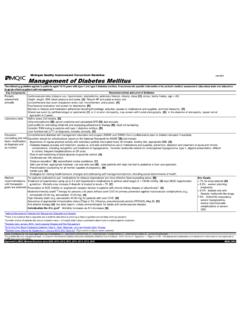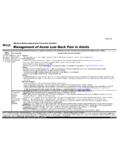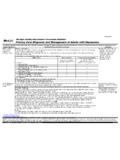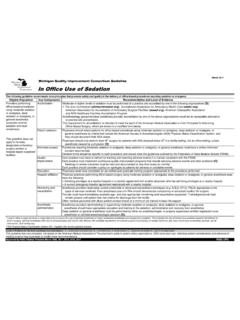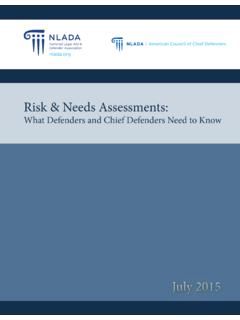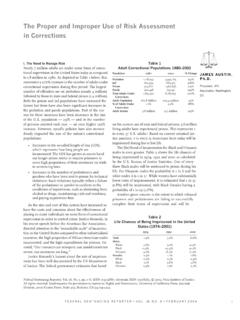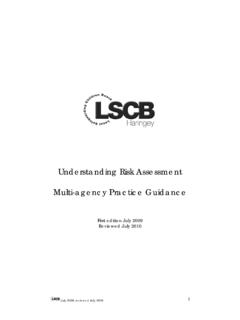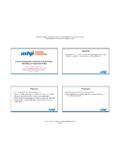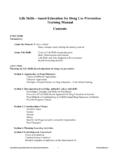Transcription of Michigan Quality Improvement Consortium …
1 November 2016 Eligible PopulationKey ComponentsExplain confidentiality to youth and parent early in assessment to encourage openness. Minors may access specified confidential services without parental consent or knowledge. For limits on confidentiality and information on which services minors may access without parental consent, see Michigan Legislature Public Health Code Act 368 of 1978, Section separate and private space for survey completion and during sensitivity to cultural and religious beliefs, sexual orientation and gender : Connect to appropriate referrals and community resources for at-risk patientsSCREEN: Use a developmentally appropriate screening tool to identify risk of the leading causes of adolescent morbidity and mortalityPatients at riskENGAGE: Recommend interventions to reduce , parents or other trusted adultsEMPOWER.
2 1 Bright Futures Guidelines for Health Supervision for Infants, Children, and Adolescents Tool and Resource KitLevels of Evidence for the most significant recommendations: A = randomized controlled trials; B = controlled trials, no randomization; C = observational studies; D = opinion of expert panelThis guideline lists core management steps. It is based on several sources including Guide to Clinical Preventive Services, 2014: Recommendations of the Preventive Services Task Force, June 2014; Agency for Healthcare Research and Quality , Rockville, MD; and Hagan JF, Shaw JS, Duncan P, eds. 2008. Bright Futures: Guidelines for Health Supervision of Infants, Children, and Adolescents, Third Edition. Pocket Guide.
3 Elk Grove Village, IL: American Academy of Pediatrics. Individual patient considerations and advances in medical science may supersede or modify these by MQIC Medical Directors 2012, 2013, 2014, 2016 assessment for Adolescent Preventive Services (RAAPS)Assess and discuss:Patient's risks; adapt counseling techniques based on patient readiness to make behavior changesPatient's strengths; elicit strengths through discussionElicit implications, consequences, and adverse outcomes associated with risk in relationship to life goalsAssist patients in reducing their risk(s) by:Developing a risk reduction and/or safety plan based on patient's goals and readiness to make behavior changesEncouraging safer choices and behaviors and discussing multiple options to reduce risky behaviors (eg.)
4 How can we work together to keep you safe and healthy?)Offering self-management resources including anticipatory guidance and contracting for follow-up testing, counseling, or referrals. Frequency of follow up is based upon risk behaviors identified and risk reduction plans follow up that protects the patient's privacy and confidentiality. Obtain a safe and confidential phone number or other contact information from and determine resources for social and emotional to a primary care provider, family planning clinic, local health department, dietitian, mental health provider, or substance abuse treatment center when agreement with patient regarding the content to be shared with the trusted ownership of health behaviors, and offer support making their own healthy decisions.
5 Michigan Quality Improvement Consortium GuidelineAdolescent and Young Adult Health Risk Behavior AssessmentNearly 75% of adolescent morbidity and mortality is related to their risky behaviors. The following guideline recommends best practices for assessing adolescent and young adult health risk behaviors utilizing evidence-based risk assessments and counseling : Create an environment that builds trust and rapport with adolescent populationPatients 11-20 years of age, accessing health care in a variety of settings: Primary Care Practices, School-Based Health Centers, STI Clinics, Behavioral Health Clinics, Emergency CentersAsk questions in a way that establishes trust through dialogue and body a list of community resources for use with patients/families (eg.)
6 Local 211 ). Facilitate referrals to needed resource ( , behavioral health providers, social worker, psychiatrist, psychologist, nutritionist)At least annually, use a brief, validated risk screening tool1,2 in all health care settings in which adolescents present for care, addressing the following categories: 1. Unintentional injuries/violence - weapons, helmet and seat belt use, driving when distracted (cell phone/texting), bullying, personal content exposure via social media, physical/psychological abuse2. Behavioral Health Disorder - depression, anxiety, self-harm, suicidal ideation/behaviors (PHQ-2, PHQ-9)3. Tobacco Use - cigarettes, e-cigarettes, other forms of tobacco4. Alcohol and other drugs - alcohol, marijuana, prescription/non-prescription drug use, inhalants, other drugs, use prior to sex, driving under influence (CRAFFT)5.
7 Sexual behaviors contributing to unintended pregnancy, STIs and HIV - sexual activity/involvement, sexual orientation, gender identity, past pregnancy and STI, contraception use, and safer sex practices6. Dietary behaviors - energy drink/soda/caffeine intake; fruits/vegetables; dieting behaviors, eating disorder; fast/junk food intake7. Physical Activity - exercise 60 minutes 3 or more days/week, screen time <2 hours/day8. Protective factors - supportive adult, future goals, school/community connectedness, peer influenc
